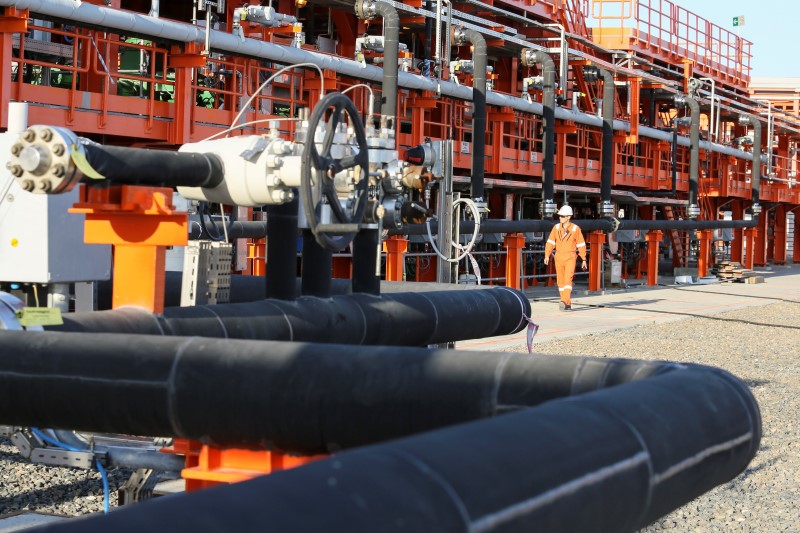By Liz Hampton
HOUSTON, Nov 24 (Reuters) - Phillips 66 (N:PSX) PSX.N has
overhauled how it plans for earthquakes, a sign U.S. energy
companies are starting to react to rising seismicity around the
world's largest crude hub in Cushing, Oklahoma.
The changes include new protocols for inspecting the health
of crude tanks, potentially halting operations after temblors,
and monitoring quake alerts.
The revisions, fully implemented in 2015 and first detailed
to Reuters this past week, appear to mark the most significant
acknowledgement by a major energy company that its seismic
procedures were recently updated.
They also come as some researchers say tougher standards for
energy infrastructure such as pipelines and tanks could be
needed to handle an uptick in quakes since 2009 in Oklahoma.
Scientists have tied a sharp increase in the intensity and
frequency of quakes in Oklahoma to the disposal of saltwater, a
normal byproduct of oil and gas extraction work, into deep
wells. Oil fields have boomed in Oklahoma over the past decade
thanks to advances in hydraulic fracturing and horizontal
drilling.
A 4.7 magnitude quake struck in Oklahoma on Thursday, the
strongest temblor there since 2011. About a month earlier, a 4.5
magnitude quake hit near Cushing. Regulators responded by
calling for nearby disposal wells to shut or curb intakes.
Phillips, a refiner, has 167,000 barrels per day of pipeline
capacity and 700,000 barrels of storage tanks at Cushing, home
to about 57 million barrels of crude and a nexus for U.S.
supply, according to a 2015 investor presentation.
Though its new protocols apply to all its U.S.
infrastructure, when asked specifically about potential Cushing
risks, Phillips said its "seismic response protocol was
developed as part of our enhanced geohazard program, which
addresses geotechnical, hydrotechnical and seismic hazards."
To be sure, most oil companies test the integrity of tanks
on an on-going basis and many told Reuters their tanks are built
to the latest construction standards and building codes.
But some scientists are questioning whether standards should
be tightened.
Geologists led by D.E. McNamara of the USGS said in a
September academic paper that including human-caused quakes in
the National Seismic Hazard Model, a reference for engineers,
"would result in serious implications for design standards."
Currently, man-made quakes are also not accounted for in
tank standards published by the American Petroleum Institute
(API), an industry group, and design loads from the American
Society of Civil Engineers.
Strong quakes in regions outside Oklahoma have split steel
as rolling ground motion puts the weight from the liquids on one
side of the tank, known as "elephant footing," said Thomas
Heaton, a professor at California Institute of Technology.
Engineers told Reuters most tanks in Cushing rank in Seismic
Use Group 1, the weakest classification in API standards.
TransCanada Corp TRP.TO said its seven Cushing tanks are in
SUG 1.
The largest quake in Oklahoma was 5.6, a level with
potential to damage tanks. Tanks normally have containment berms
to catch leaking oil.
"Anything more than a 5.0 you have to worry about a little
more," according to Muralee Muraleetharan, a civil engineering
professor at the University of Oklahoma.
